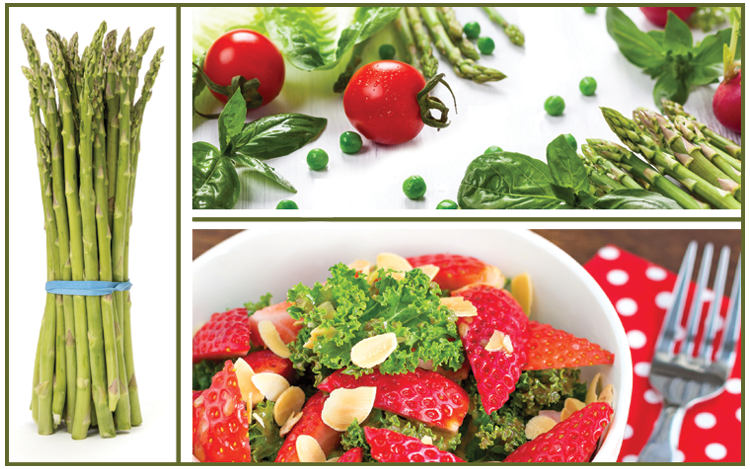IF YOU SOMETIMES can’t remember where you put your keys, screw cup hooks inside a cupboard near the garage door. To never have to ask “Why did I come into this room?” live in a one-room house. Both work, but neither is tasty.
The food you eat can help keep memory sharp.
The Alzheimer’s Association says a diet that’s healthy for your brain is much like a diet that’s good for your heart. It “reduces the risk of heart disease and diabetes, encourages good blood flow to the brain, and is low in fat and cholesterol.” The ideal diet is high in B vitamins, protein, omega-3s, and antioxidants too.
It’s easy to eat to boost your memory. You just have to remember to eat the proper foods. Some vitamins and minerals linked to improved memory include vitamins B6, B12, D, C, and E; folate; biotin; coQ10; omega-3 fatty acids; and antioxidants, particularly in the flavonoid family. That’s a mouthful.
A colorful array of fruits and vegetables — hard and soft, leafy and solid — should be a mouthful too. Your mouth.
We change as we get older, including our sense of taste. For instance, asparagus that used to be a strong taste might mellow out. It’s great for us and still a good buy even at $2.99 a pound because you get a lot for your money. But it’s no good if you don’t eat it.
Garlic is a taste bud’s friend. Keep a jar of chopped garlic in the fridge to toss in when cooking savory dishes. Look on the bottle to see where it’s from. The same goes for boxes and sleeves. We grow a lot of the pungent herb in the Americas.
Sauté a little onion and garlic in olive oil and toss in sliced asparagus. Keep the tips to toss in near the end of cooking.
Greens and cruciferous vegetables are said to slow cognitive decline. Start with the same onion, garlic, and oil, then add sliced turnip greens or sliced kale. Cook a couple of minutes and you’re ready to eat.
Publix has bags of ready to cook vegetables — cauliflower, carrot, and broccoli — and they are on sale often. Microwave a bag just as it says, and when they are done, cut the bag open and toss some with the hot onion, oil, and garlic that is fast becoming a staple. It’s quick and tasty.
Take what is left over and chop it a bit. The next day make enough rice for a couple of meals and add the cooked vegetables to some of it. Toss in our favorite mixture in a hot frying pan. Shrimp or lean meat can add protein.
Omega-3s might help you remember where you put those pesky car keys. Fish is an easy place to get omega-3s. Cold-water fish, rich in omega-3s, include halibut, tuna, mackerel, and sardines.
Canned salmon is super for supper or lunch. Open the can and drain the fish. The bones and skin are good for you. Pink is fine. The bright red Sockeye can be saved for company or a treat. Arrange it over a handful of greens and add nuts and flax seeds or sunflower seeds. Add any dressing you like.
Salmon salad for lunch means adding mayonnaise and imagination — herbs, nuts, seeds, raisins, other dried fruits, berries, pineapple …
Do the same thing with tuna. Genova Tonno is a favorite. It’s packed in olive oil, is wild caught, comes in 5-ounce cans, and is mild and doesn’t turn to mush when you mix it. Try halved or quartered red grapes with nuts and seeds. A little celery adds even more crunch. Watch for the four-packs when Publix has them on BOGO.
Berries are bursting with antioxidants that keep us thinking clearly. And you don’t even have to open a can. Wash and toss over cereal, slide them into a smoothie, halve a biscuit for shortcake. Get a tad fancy by melting a little butter in a small frying pan, add some brown sugar and let it melt. Now add, no not garlic, the berries and cinnamon or cardamom and let the juices simmer to thicken a bit. Delicious, and an easy dish to remember.
CREDIT
by TRENT ROWE
Trent Rowe is the food editor of Central Florida Health News.
